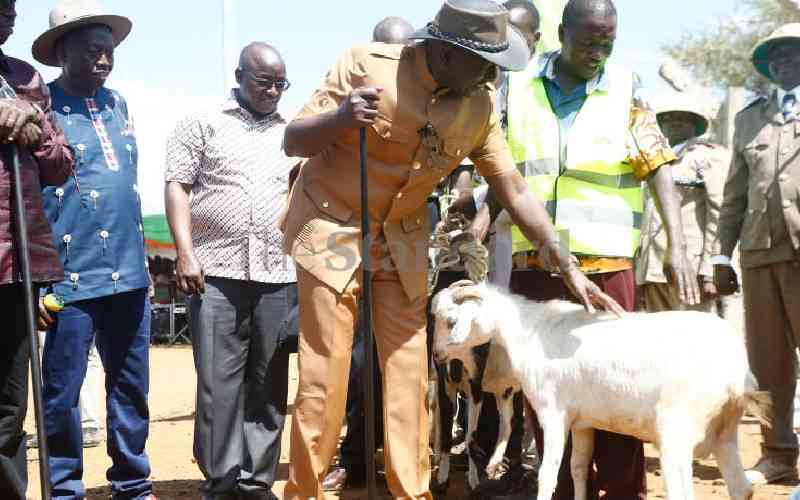By Tom Odhiambo
The youth scenarios in Kenya, to borrow a term from the Institute of Economic Affairs, are bleak. The Kenyan youth are cast as a jobless, hopeless and futureless. How can a whole generation be futureless? What is the point of life when there is no future? The problem with this doomsday theory is that it underestimates the human capacity for innovation and perseverance.
Often, I shudder at the thought of the millions of jobless young people. What with jobs that primarily ask for five or 10 years of experience! What stand does a fresh high school leaver or undergraduate or even an MA degree holder have when prospective employers seem to list requirements that only 40 plus year-old individuals may have a chance to meet?
Well, I am an optimist. I believe it is possible to make good out of the desperate state that many Kenyan youths live in. Young Kenyan women and men must begin to think harder than they have ever been expected to do in the past 40 plus years since independence. There was a time when parents only worked to secure their children’s future. Now, many parents will be lucky to have three meals in a day. Many can’t afford the basics of life. So, what do you do if you are a young man in Machakos, Siaya, Kakamega, Turkana or Nairobi County?
For decades, towns such as Nairobi, Nakuru, Eldoret, Mombasa, Malindi, Kakamega and Kisumu have been the place to go to after school. These places guaranteed some employment.
There was a chance to get work as a clerk, a shop attendant, a housemaid, a gardener or in the jua kali sector, for those who missed a chance to join the Government workforce or couldn’t get into professions such as medicine, law, architecture or engineering. The towns offered a chance to ‘make it in life’ for those who were determined enough.
But these towns are saturated. They are overblown. Life in the slums and hovels of these towns is often a death sentence for millions of youths. The Government continues to spew humbug on the question of the youth. Every little and big politician around the corner masquerades as the saviour of the Kenyan youth. Much of this talk is hogwash.
Young Kenyan women and men need to appreciate that their future can no longer be found in the towns and cities of this country. They need to go beyond the desperation and despondency that Meja Mwangi narrates in his two books: Kill Me Quick and Down River Road. The bright future or dream that thousands of these youths go to seek in towns can, indeed, be found in the villages, hills and valleys where they were born.
Youth have to start to think and act from home, wherever that is. It is more productive to think local before getting obsessed with ‘world standards’.
Consider the potential in the different counties: Tourism and farming for much of the Rift Valley; Small-scale greenhouse farming, fishing and water sports for much of Nyanza and the Coast Province; cattle rearing for much of Eastern and North Eastern provinces.
Central Kenya and parts of the Eastern Province – which can directly lead to leather-based industries; Central Province has the ability to feed a half of the country through smallholder and cooperative farming. The greenhouse revolution and intensive animal rearing are the mainstay of food production in many industrialised countries.
Youth have to learn that there is honour in the use of one’s hands. Thousands of acres of land lie idle whilst young men and women cry about unemployment. The youth in counties through which rivers such as Sondu-Miriu, Turkwel, Tana, Athi, Yala, Galana, Nyando, Nzoia, Gucha or Njoro pass have to devise ways to use these waters for agriculture. Kenya is economically described as an agricultural country.
Youth in the counties should think of how much money they could make by producing food.
Real wealth still lies in the soil, for much of the world, and the youth have to learn how to excavate it through agriculture.
Stay informed. Subscribe to our newsletter
The writer is a senior lecturer at the University of Nairobi.
 The Standard Group Plc is a
multi-media organization with investments in media platforms spanning newspaper
print operations, television, radio broadcasting, digital and online services. The
Standard Group is recognized as a leading multi-media house in Kenya with a key
influence in matters of national and international interest.
The Standard Group Plc is a
multi-media organization with investments in media platforms spanning newspaper
print operations, television, radio broadcasting, digital and online services. The
Standard Group is recognized as a leading multi-media house in Kenya with a key
influence in matters of national and international interest.
 The Standard Group Plc is a
multi-media organization with investments in media platforms spanning newspaper
print operations, television, radio broadcasting, digital and online services. The
Standard Group is recognized as a leading multi-media house in Kenya with a key
influence in matters of national and international interest.
The Standard Group Plc is a
multi-media organization with investments in media platforms spanning newspaper
print operations, television, radio broadcasting, digital and online services. The
Standard Group is recognized as a leading multi-media house in Kenya with a key
influence in matters of national and international interest.








